
Milton Avery: conversations with colour
By Kelly Grovier
Published on 10 July 2022
As the RA mounts the first major survey show of American artist Milton Avery in Europe, Kelly Grovier traces his career – from his artistic roots in American Impressionism to kinship with Abstract Expressionists including Mark Rothko – and Avery's lifelong obsession with colour.
From the Summer 2022 issue of RA Magazine, issued quarterly to Friends of the RA.
Kelly Grovier is a poet and feature writer for BBC Culture. His latest book, The Art of Colour, is published in Spring 2023
For an artist frequently described as ‘lyrical’ and ‘poetic’, the American painter Milton Avery was remarkably tight-lipped. The words of his chattier contemporaries, from Hans Hofmann to Robert Motherwell, are easy enough to come by in collections of essays, letters and interviews. Even for Barnett Newman, who strove to keep his mouth as zipped as his canvases (“I prefer,” he insisted, “to leave the paintings to speak for themselves”), a hefty volume of reflections on art and life is just a quick catalogue click away. But when it comes to Avery, a crucial bridge between the traditions of American Impressionism and Abstract Expressionism, the library shelves are surprisingly schtum. “He wasn’t a talker,” Milton’s daughter, March Avery Cavanagh, admits. “Why talk when you can paint?” she recalls him asking. “Sometimes a couple of days would go by without him saying much.”
Keeping quiet, of course, isn’t the same thing as remaining silent. Avery’s paintings are among the most eloquently conversant in all of modern art. The luminous energy that vibrates from their surfaces is as garrulous as it is gorgeous. His works open deep dialogues with the artist’s predecessors, his peers and his aesthetic heirs. If you want to hear Avery reflect on being in the world and on making some of the most shimmeringly sublime images of the past century, listen closely to the canvases themselves – to the exquisite colloquies they strike, deliberately or subconsciously, with everyone from Ernest Lawson to Toulouse-Lautrec, Henri Matisse to Mark Rothko. And what do they discuss? Colour. For Avery, the topic is tenaciously the same. It’s always colour.
For Avery, the topic is tenaciously the same. It’s always colour.
Voices echo from the earliest works on display in the RA’s survey of the artist, the first comprehensive exhibition devoted to Avery’s work ever to be staged in Europe, assembling an impressive 70 works. Take, for example,
the bold and blurry beauty of his small oil-on-board Blossoming (1918, below), among a handful of works on show that Avery created when he was in his early 30s in Hartford, Connecticut, near where his family had moved 20 years earlier. At first glance, the slant of trees and blur of burgeoning white petals from bold branches call to mind a similar vantage on spring in Vincent van Gogh’s The White Orchard (1888).
But this particular scrunching of colour into something almost sculptural also provokes a conversation with Ernest Lawson, an artist much closer to Avery’s home. After stints working as an assembler and a mechanic in local factories when he was a teenager, Avery began his migration towards making images when he enrolled in a commercial lettering course at the Connecticut League of Art Students, where his aptitude for drawing was quickly recognised. Encouraged by the institution’s director, who spotted Avery’s talent straight away, he shifted to art classes at the League, where he would continue to study assiduously,
if informally, for the next 13 years. It was then that Avery became acquainted with the work of Lawson, a Canadian- American painter with connections locally to the Cos Cob art colony in Connecticut. From Lawson’s impressionistic landscapes Avery learned the importance of working with his subject immediately before him, typically to capture
a watercolour sketch from which an oil-on-canvas might follow – an immersive posture that Avery was to adopt for the rest of his life.

And then there were the voices. In Lawson’s heavily impastoed paintings one can discern the accents of both Cézanne and the American Impressionist John Henry Twachtman, Lawson’s former teacher, with whom Lawson robustly debated the priorities of light and form. Avery would soon find himself working through the dispute between the relative gravities of physical mass and evaporative colour. Mimicking the clotted texture
of Lawson’s works, in Blossoming he used his palette knife and fingertips to massage pigment into a dimpled Braille
of solidified light. That same tactile technique teases into language too the surface of his small canvas Setting Sun (1918, below) – an early gem that curdles the meditative reflections of Monet’s pondscapes into something
rumpled and chromatically contentious. Though Avery’s better-known mature works would be characterised by a smooth and simplified evanescence of colour, his obsession with the materiality of light can be traced back to these early experiments.
While Avery devoted his days to painting, his sleepless nights were filled emptying the inbox of the liability claims department of a local insurance company in Hartford. As cultural history would have it, the aspiring artist’s five-year tenure at the Travelers Insurance Companies coincided precisely with the arrival in the head offices of another insurance firm, across town, of the celebrated American poet Wallace Stevens. Stevens’ fascination with the interplay of mind and world, perception and imagination, dominates his first collection of poems, Harmonium (published in 1923, a year before Avery’s own first solo exhibition) and is remarkably in harmony with the painter’s own preoccupations. We know from remarks made by Avery’s future wife, the illustrator Sally Michel (whom Avery would meet the following year, in 1924, at an art colony in Gloucester, Massachusetts), that he developed a fondness for Stevens’ poems, which he would read aloud to Sally and their daughter March.

Placed side-by-side, the two insurance men’s stanzas and canvases riff off each other – gnashing and sparking
in ways that cast revelatory light on each others’ elusive lyricism. Consider, for instance, the brawny poetry of Avery’s cerulean-soused oil painting Ox and Cart, Gaspé (1938 or 1939, below), which he transcribed from a watercolour he had made on a trip to the Gaspé Peninsula in eastern Canada after he and Sally came across a feature on the place in National Geographic magazine. As Marla Price explains in the handsome catalogue that accompanies the RA exhibition:
“Attracted by the rugged, remote terrain with hills and mountains rising directly from the sea, they settled in the small town of Petite-Rivière-au-Renard. The hills of the Gaspé provided elevated vantage points from which to view the sea, shore and rocks below, dramatic views that Avery translated into a pictorial space that tilts and weaves, pushes and pulls with a boldness that mirrors the actual landscape. He also expanded his use of strong colour to make it the powerful basis for many of his compositions.”
That expansion of “strong colour” in Ox and Cart, Gaspé, of an enveloping blue vapour that dominates the emotional temperature of the painting and seems surreally both to emanate from the oxherd himself and fix him in an azure eternity, rhymes with lines that Stevens published a year earlier. In The Man with the Blue Guitar (a book that is frequently interpreted as, itself, a cubistic conversation between the poet and Pablo Picasso’s 1903 painting, The Old Guitarist), Stevens describes “the color, the overcast blue / Of the air”:
“The color like a thought that grows /
Out of a mood, the tragic robe /
Of the actor, half his gesture, half /
His speech, the dress of his meaning”
Stevens’ oversaturated lines, which weave a blue thread through Picasso’s portrait, could as easily serve as a caption to the hue and humour of Avery’s painting, suggesting an ever-widening circle of voices – a whispering gallery of accumulating meaning. Colour is conversation.

In 1925 Avery and Sally moved to New York, where they married the following year. Sally, who was 17 years Avery’s junior and a recent graduate from high school, was soon determined that she should focus on keeping the couple financially afloat in order to free up her husband’s time to paint. Juggling jobs as an illustrator for Macy’s department store and for The New York Times, Sally made possible Avery’s drive to develop as a painter and his efforts to assimilate into the New York art scene. Often working side by side in the living room, which served as a joint studio, the pair would rise early and work until late in the evening. Avery’s secure sense of independence meant that he could evolve as he wished, without catering to the shifting whims of prevailing taste – even if that meant, in the lean years
of the ensuing Great Depression, that he, Sally and March subsisted largely on Spam and peanut butter.
The early years in New York brought fresh chatter
into Avery’s life and canvases. Soon after arriving in the city, and attending classes at the Art Students League of New York, he found himself shoulder to shoulder with other emerging artists, including Arshile Gorky, Barnett Newman and Mark Rothko, with whom he later formed a lasting bond. The newlyweds frequently visited the city’s art museums and galleries. An askew snapshot of a circus by Toulouse-Lautrec, Equestrienne (at the Cirque Fernando) from 1887–88, which Avery likely saw at an exhibition in early 1931 at the Museum of Modern Art, appears to have made a particular impact.
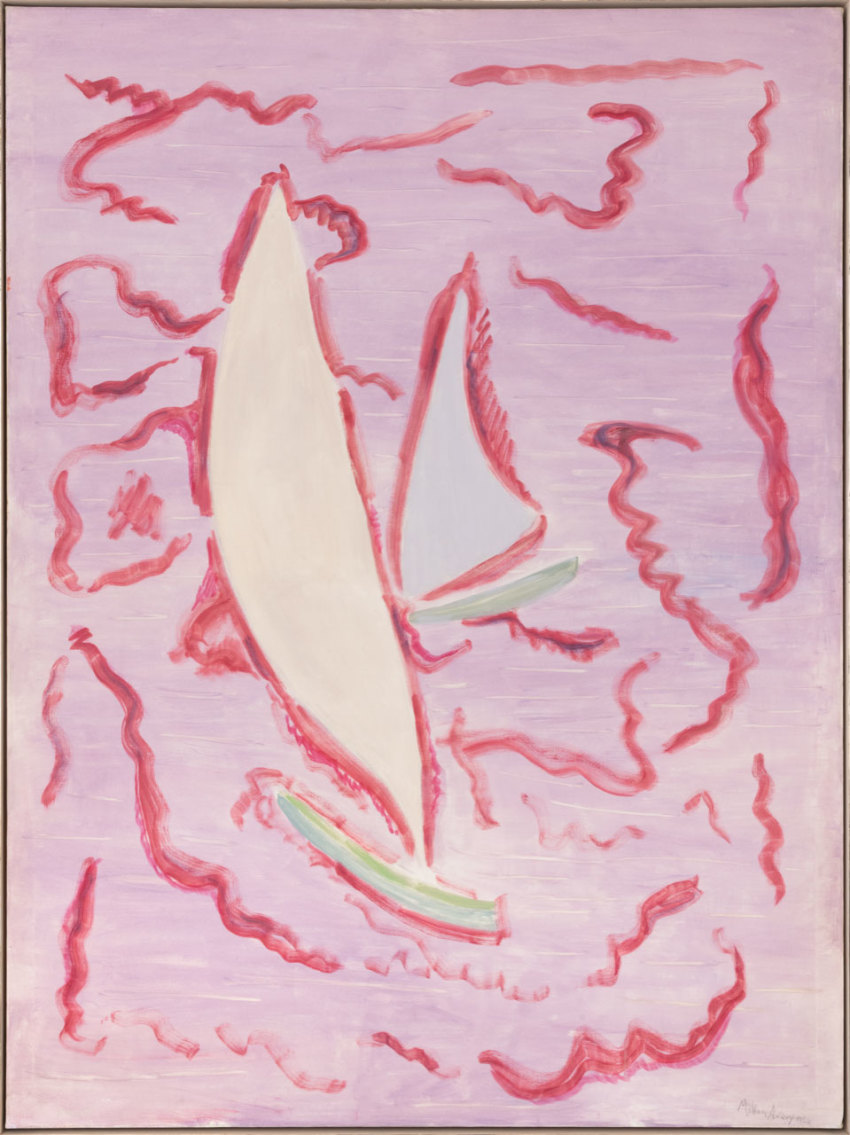
Painted in a single day, Avery’s acrobatic Chariot Race (1933, below), an exhilarating carnival scene that finds the artist working outside the comfort of familiar landscapes, is likely indebted to the wonky perspective of Lautrec, in whose work Avery may have also glimpsed the advantages of thinning paint to an enchanting translucence. Other city scenes from the 1930s, such as those of an auction and the theatre, explore in quickened brushstrokes the psychology of crowded colours in cramped social spaces, opening intriguing dialogues with contemporaries like Edward Hopper, who isolated the hues of urban loneliness.
As riveting as the city’s cultural attractions were, Avery’s imagination would gravitate in the 1940s to the quietude
of intimate portraits (March in Babushka, 1944) and interiors (Husband and Wife, 1945), and to probing the vibrancy of natural scenes. For many viewers, the inventiveness with which Avery here puzzled together areas of flat colour in paintings seemed deliberately in dialogue with (if not in deference to) Matisse, whose New York representation, the Valentine Gallery, Avery himself joined in 1935. Dubbed variously the ‘American Matisse’ and the ‘American Fauve’, Avery resented the comparison and having critics “pin Matisse” on him, however much he may have admitted to liking “the way he puts the paint on”.
Avery’s unfailing fidelity to things as he actually perceived them, rather than, as Matisse was often inclined, bending the world to the line and lyricism of his poetic form, profoundly distinguishes the two artists’ deceptively comparable imaginations. To equate Avery with Matisse too closely is to misunderstand how the two artists grasped their respective obligations to colour. Place Matisse’s The Dance (1909–10) side by side with Avery’s Swimmers and Sunbathers (1945), and the contrast between the stridency of emotive pigment in Matisse’s work (which vibrates with Fauvist fervour) and the delicately distilled hues in Avery’s canvas (poetically licensed, yes, but punctiliously perceived) is pronounced. “I strip the design to essentials,” Avery once admitted, in order to isolate “the essence of nature.”
Where Matisse believed that colour was chiefly an expression of mind (“colour helps to express,” he said, “the only light that really exists, that in the artist’s brain”), Avery chronicled the often uncanny colours of carefully scrutinised experience. “I have tried to relate the visible drama,” he said, “of wind blowing and changing colours and forms.” Avery’s works do not so much concur with Matisse’s as quarrel with them. Colour is discord.

The abundant banter in Avery’s paintings with everyone whose works he came into contact was matched outside the frame by the warmth of rapport that he and Sally enjoyed within an expanding circle of friends and artistic acquaintances. As the organising curator of the exhibition, Edith Devaney, observes in her catalogue essay: “Much has been written about Avery’s character over the years: that he was solitary; that he was reticent (and certainly there are few quotes from him)... While his artistic inclinations steered him towards being an observer rather than a participant, he clearly enjoyed the stimulation of company, particularly if it involved thought-provoking conversations on the nature of art and the act of painting.”
That rhythm of convivial conversation, both inside and outside the canvas, however, was severely disrupted when Avery suffered a major heart attack in January 1949. Unable to paint during a period of protracted recovery, he was forced to reassess entirely the enterprise of making pictures. He began to experiment with monotype, which involves the application of thinned pigment to a glass surface, which is then printed – a process that enabled Avery to produce even more lucent images and fields of flattened colour than he had achieved with brush and canvas.

In two years, Avery created over 200 monotypes and began to translate their radiance to the structure of cotton canvas. The result was revelatory. Works such as Sea and Sand Dunes (1955), whose lilac luminosity punches above its weightlessness, and Hint of Autumn (1954, below), which taps into the cinnamon fluorescence of a tree’s turning leaves, find the artist expounding with fresh fluency on his favourite subject: colour.
The final two decades of Avery’s life were spent making works of astonishing resplendence, archetypal paintings whose command of colour has as much to say to his younger contemporaries as it does to his Impressionist forebears. Whereas early in his career Avery struggled to hear his own voice above squabbles over form and light that clamoured from the canvases of Lawson and Twachtman, works created in this long final phase are in the elevated register
of an elder poet of colour. Paintings such as Boathouse by the Sea (1959) and Beach Blankets (1960), with their wide diaphanous swathes, did not lip-sync the lexicon of Abstract Expressionism; they helped coin it.
Crucial to Avery’s accelerating urgency in the eyes of his younger Colour Field contemporaries was a late and unexpected determination to go big. Four summers spent listening to the dazzling discourse between light and sand, sea and air on the beaches of Provincetown, Massachusetts, inspired him to abandon his signature small-scale canvases and to reach instead for something more expansive.
The gentle shudder of masts that seem sculpted from disappearing daylight in Sails in Sunset Sea (1960) could not have bridged the traditions of American Impressionism and Abstract Expressionism without being raised on a wider canvas.
Avery had that inner power in which gentleness and silence proved more audible and poignant.
Mark Rothko
Even the critic Clement Greenberg, who had earlier dismissed Avery, came to acknowledge the unique liminal quality of his work, which hovers between representational and non-representational art. “There is the sublime lightness of Avery’s hand on the one side,” he noted, “and the morality of the eye on the other: the exact loyalty of these eyes to what they experience.” A negotiation between Avery’s instinct for “sublime lightness” and the optical exactitude of what his eyes actually experienced can be heard echoing from every canvas. Avery’s art, Greenberg poetically observed, “floats, but it also coheres and stays in place, as tight as a drum and as open as light”.
When Avery died in 1965, Rothko was among the over 600 people to attend his memorial service. He lauded him as “a great poet” in a moving eulogy that celebrated Avery’s work as a “poetry of sheer loveliness, of sheer beauty”. “Avery,” Rothko noted, in words that apply equally to the eloquence of his paintings as they do the tranquil reserve of the man himself, “had that inner power in which gentleness and silence proved more audible and poignant.”
Milton Avery: American Colourist takes place in The Gabrielle Jungels-Winkler Galleries, Royal Academy of Arts, London, 15 July — 16 October 2022.
Exhibition organised by the Royal Academy of Arts, London in collaboration with The Modern Art Museum of Fort Worth and the Wadsworth Atheneum Museum of Art
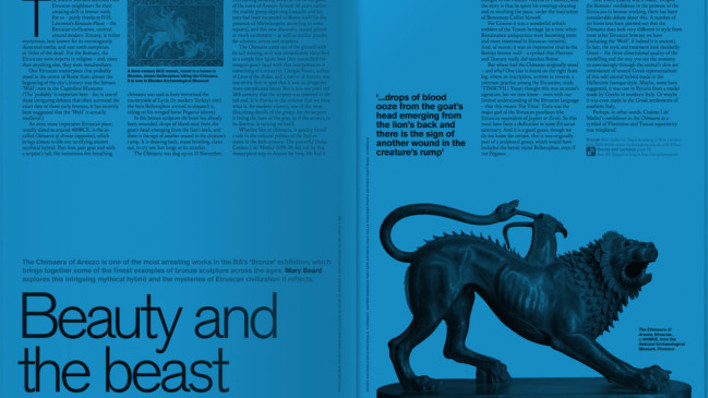
Enjoyed this article?
As well as free entry to all of our exhibitions, Friends of the RA enjoy one of Britain’s most respected art magazines, delivered directly to your door. Why not join the club?
Related articles
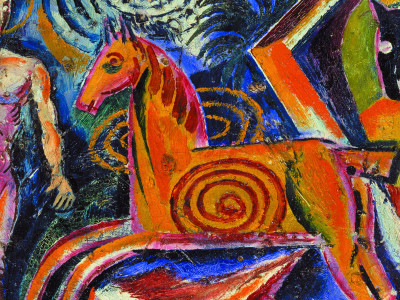
Visions from Ukraine
19 June 2024
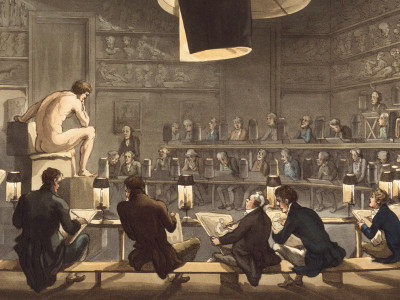
10 RA Schools stories through the centuries
16 May 2024
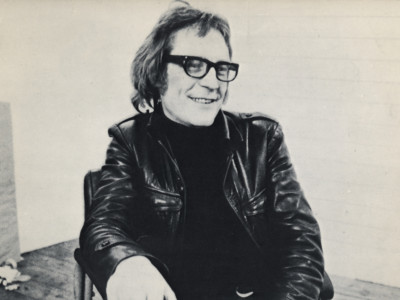
In memoriam: Mick Moon RA
1 May 2024